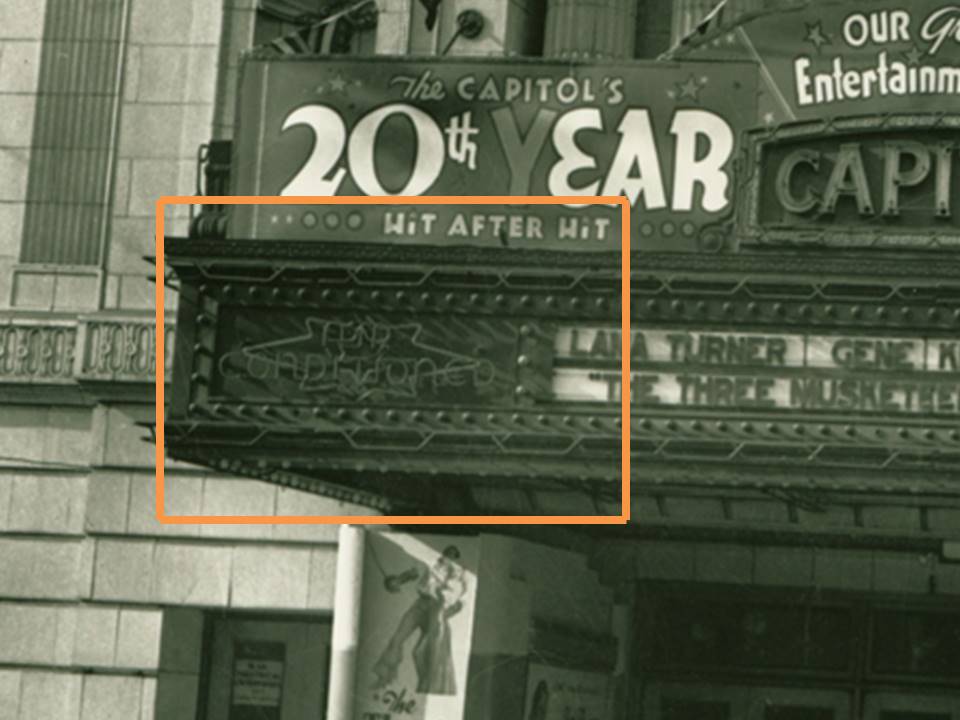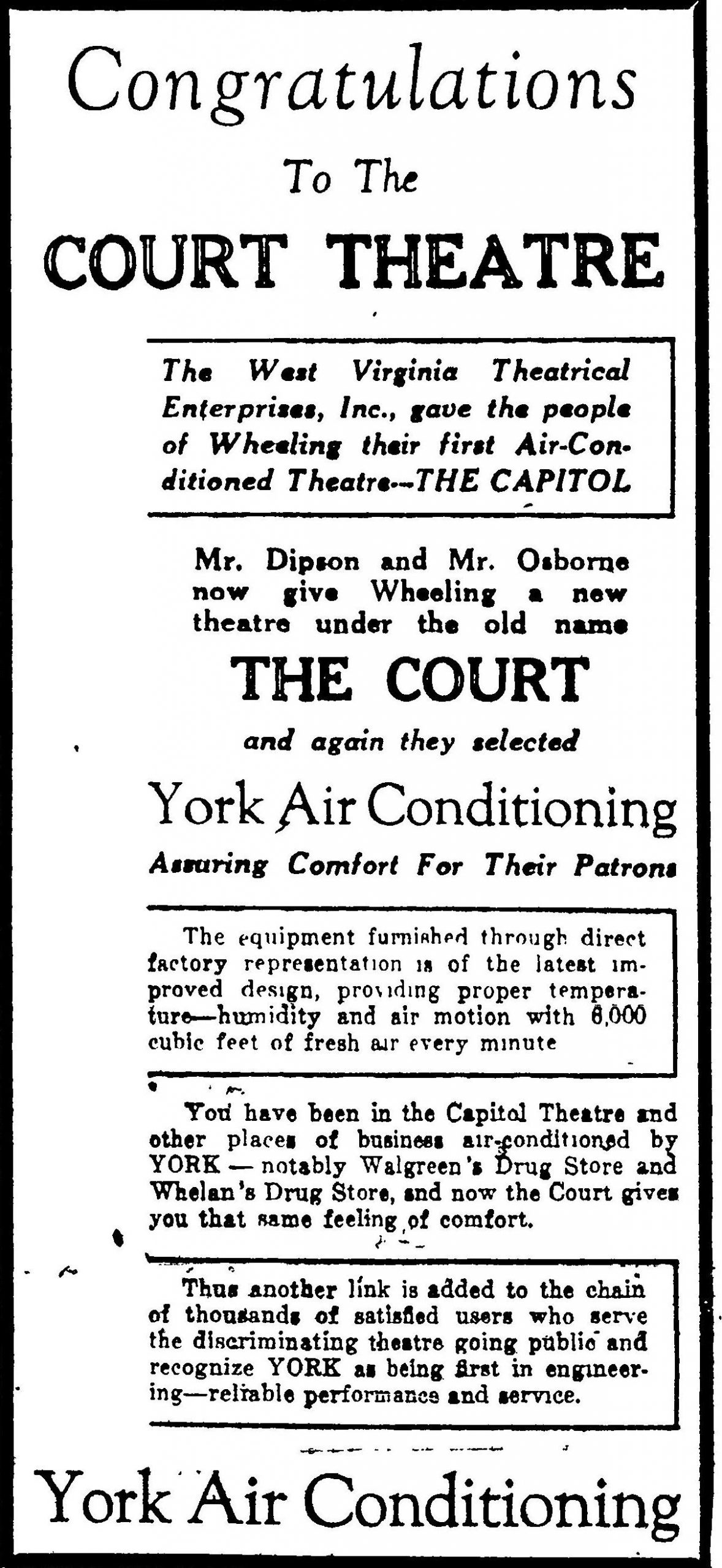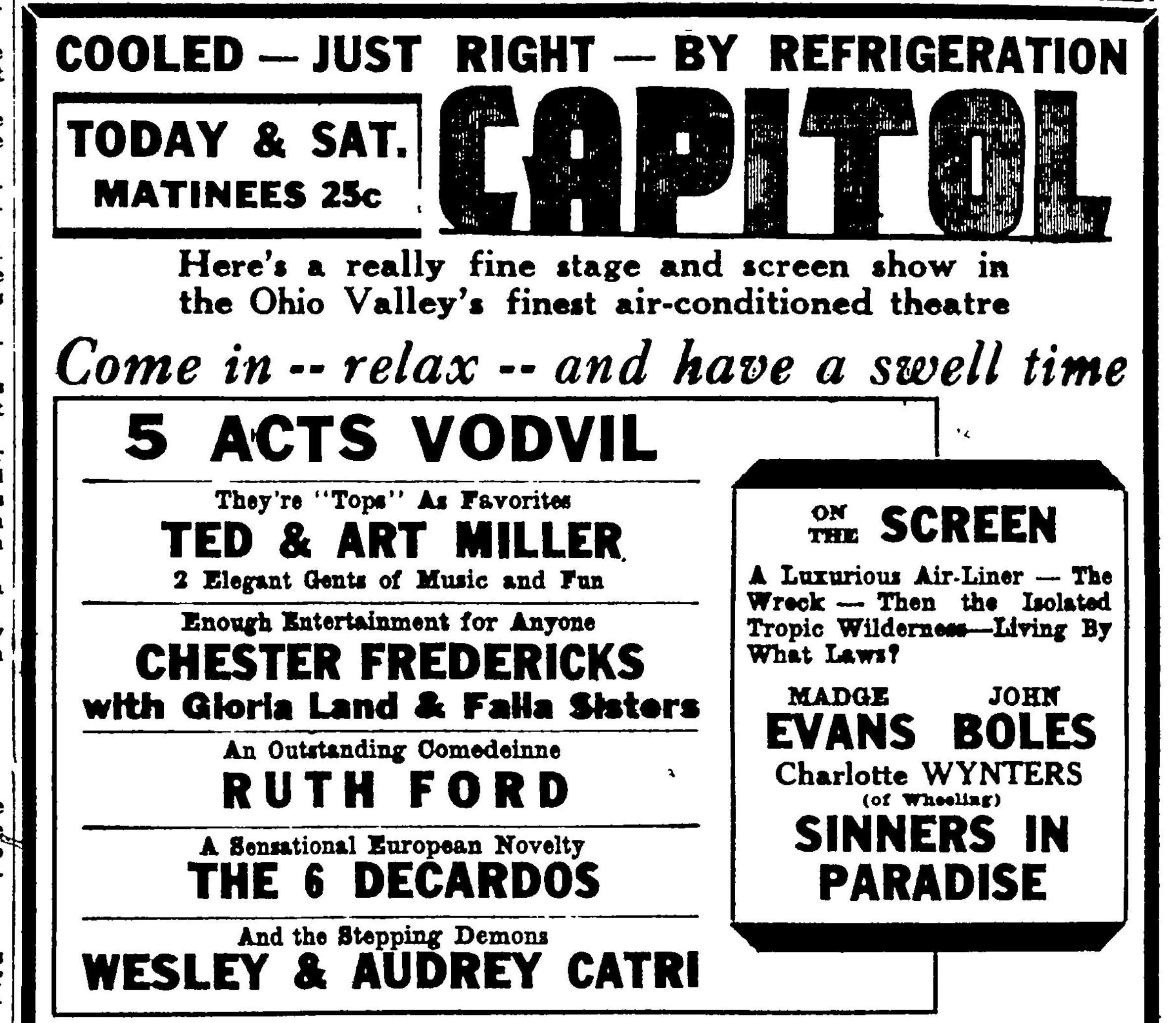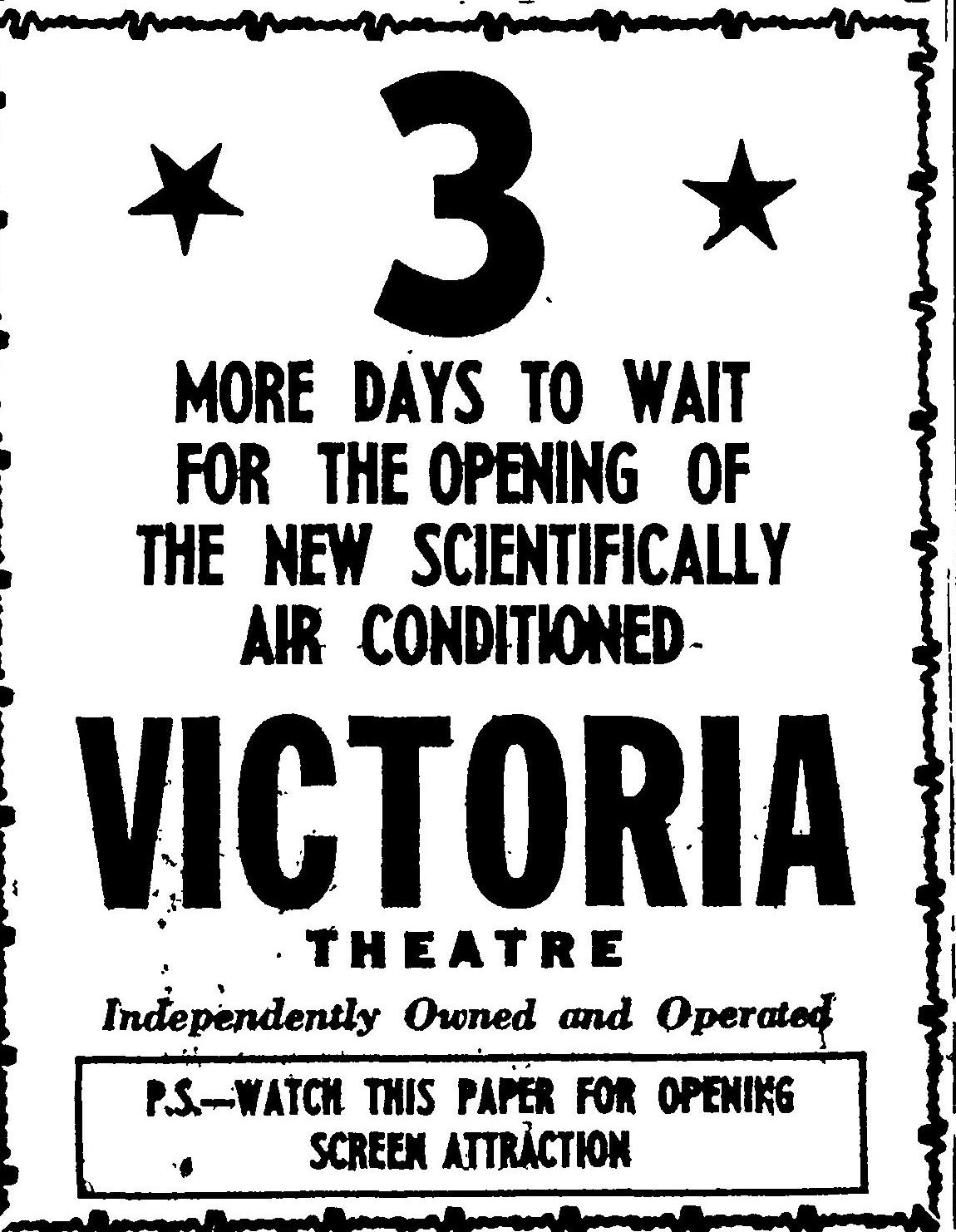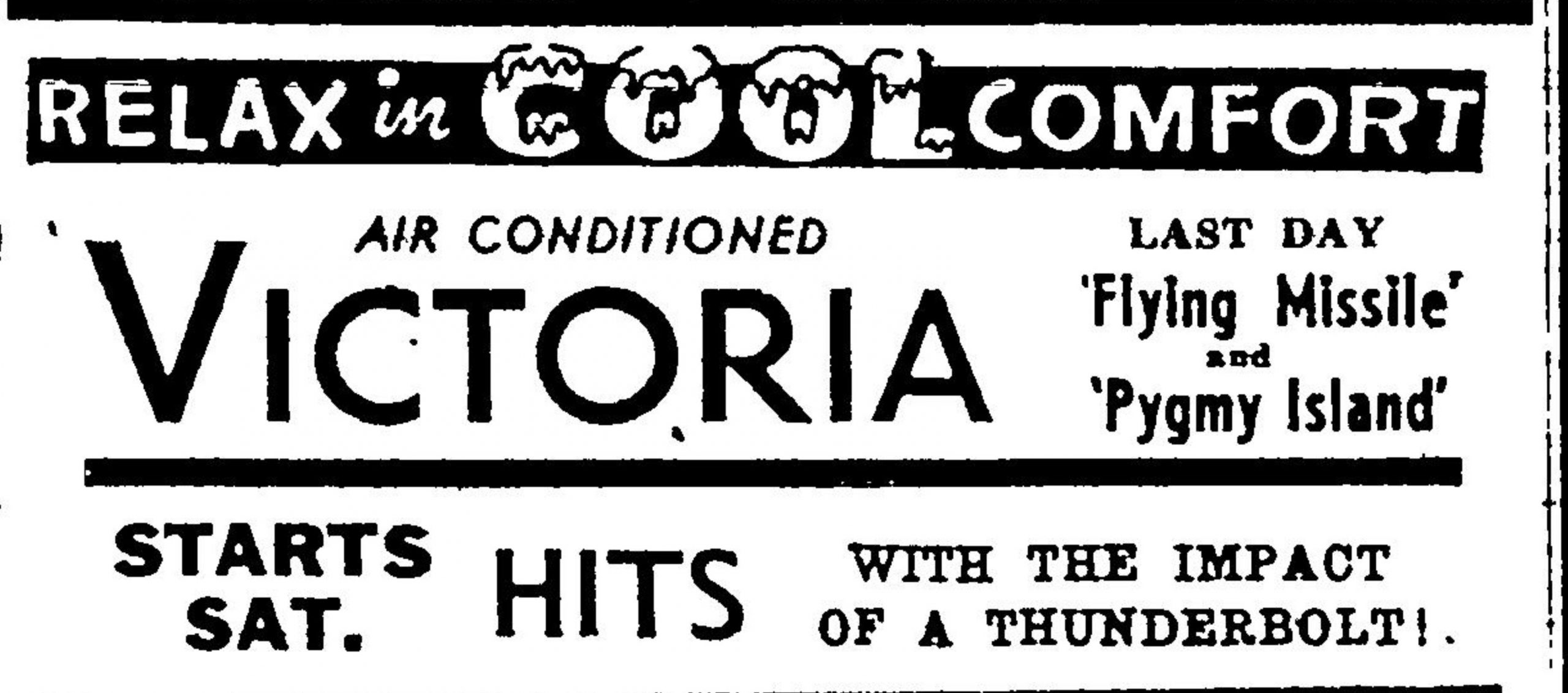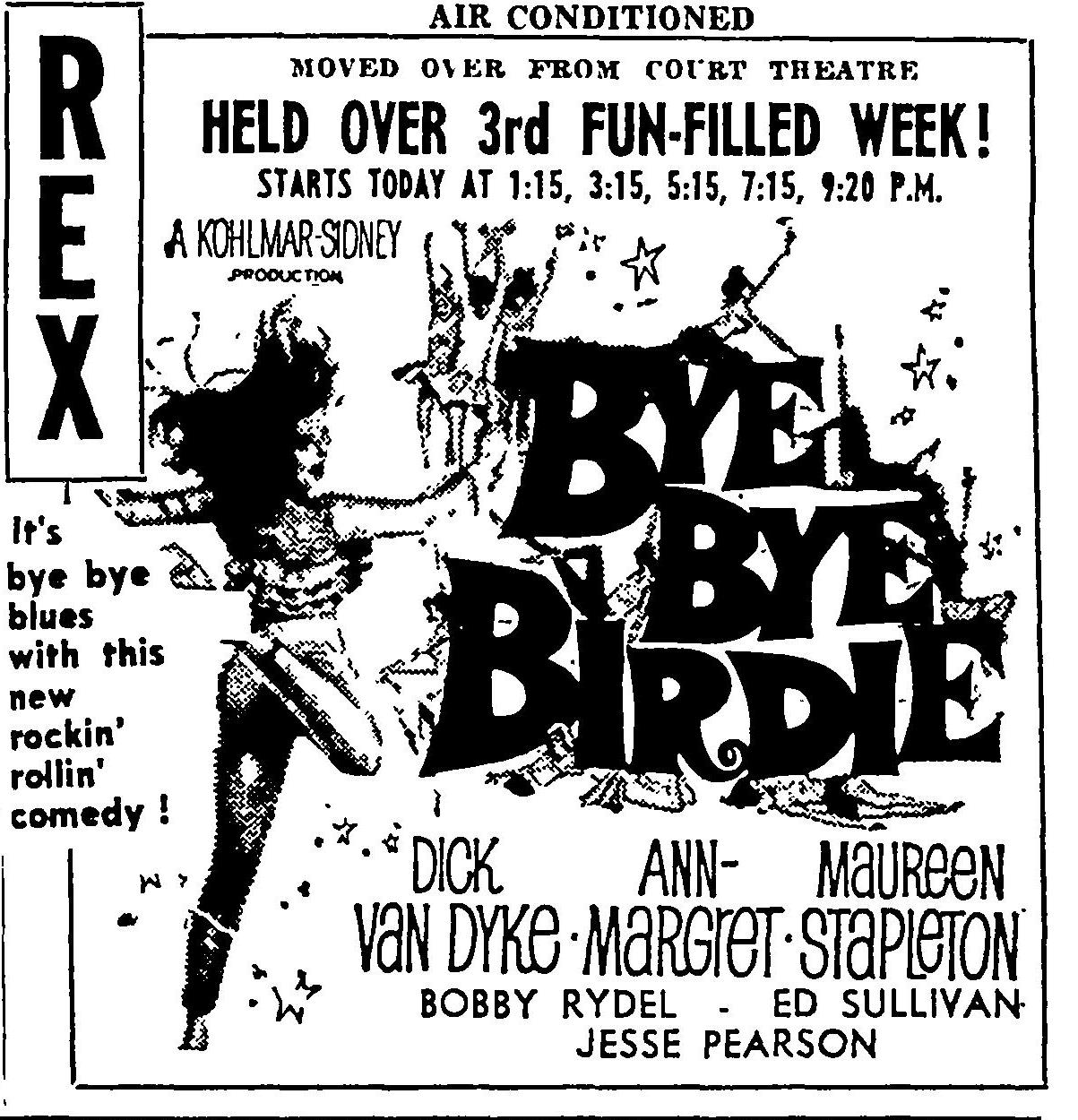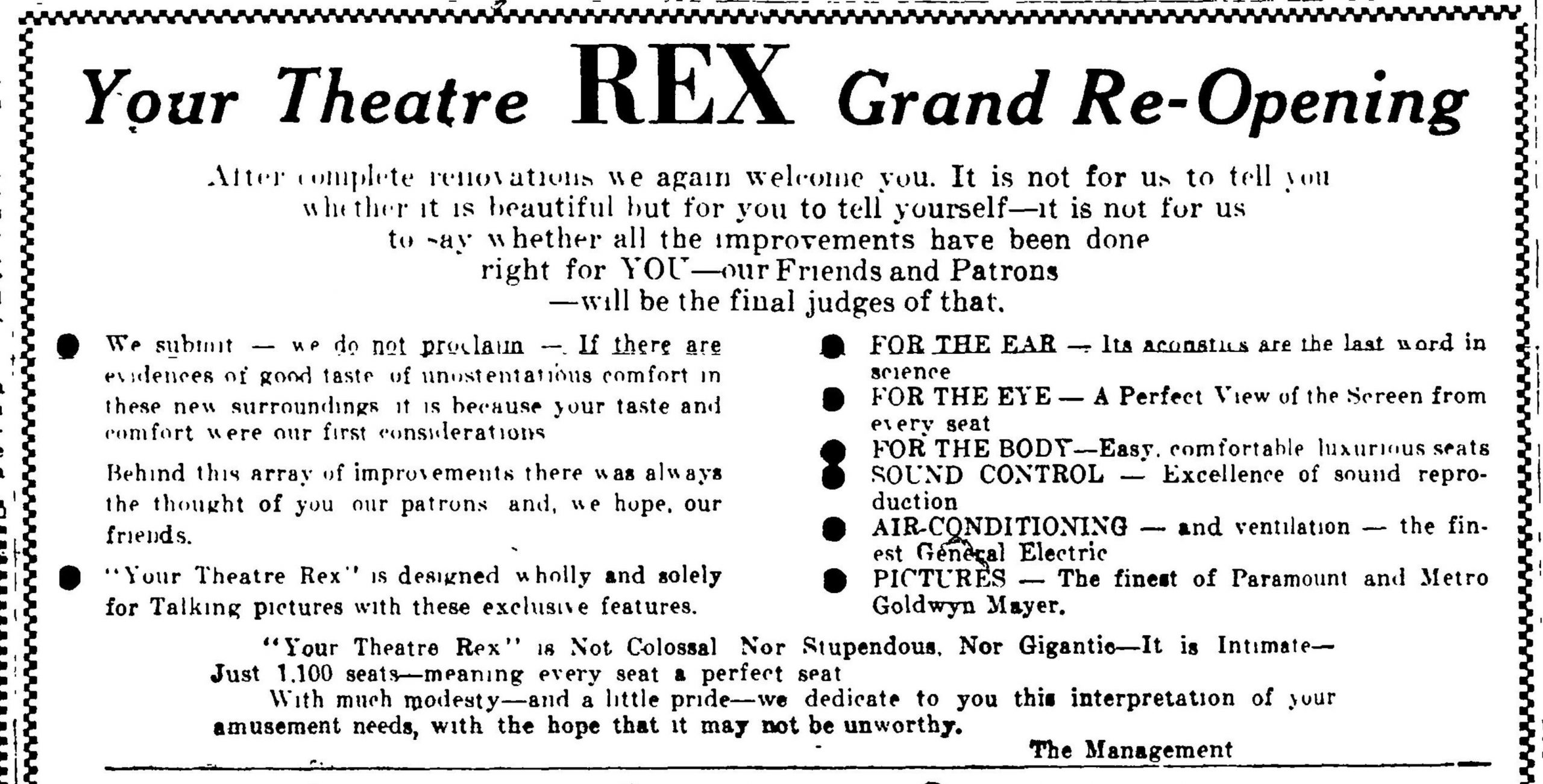If you were filling out the 1960 census, you would have been asked questions about freezers, flush toilets, and air conditioning. While today these objects seem essential to our everyday lives, the 1960 census reminds us that even just a few generations back, that wasn’t quite the case. Results from this census reveal that roughly 87% of households in Ohio County did not have air conditioning in their homes.
Modern electrical air conditioning was developed in 1902 by Willis Carrier as a way to maintain printmaking quality. Why, you ask? The summertime heat and humidity warped paper and affected print quality. While air conditioning was particularly useful for protecting paper, it was quickly discovered that the cool air improved human comfort as well.1 Over the next thirty years, continued innovation in air conditioning technology led to smaller, more affordable units and systems.
Even in 1960, in-home air conditioning was only just becoming a standard. Many of Wheeling’s homes were built well before then, so it’s not surprising that the results from the 1960 census indicated that only 1%2 of homes had a central air system.
Without air conditioning, how did Wheelingites keep cool during the dog days of summer? By turning on fans, relaxing on porches, or spending time at one of the many area pools were (and still are) great strategies to beat the summer heat. Or, you could head to the movies, the library, or go shopping. Businesses were some of the earliest adopters of air conditioning, and the installation of this new technology could be seen as a business investment. The novelty attracted patrons, and the comfortable environment may have made it easier to keep them coming back.
Wheeling’s Cool Firsts
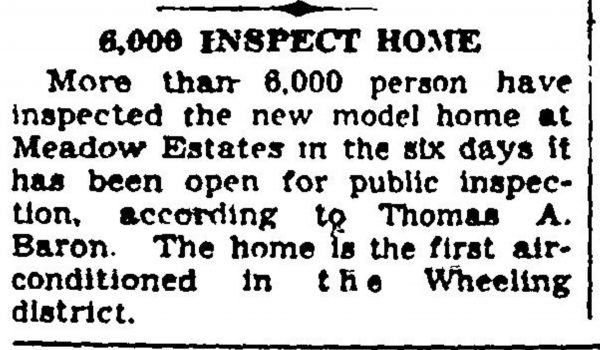
Even though a model home at Meadow Estates drew a crowd of curious to experience Wheeling’s first air-conditioned home, some of the first air-conditioned buildings were public spaces. Henderson’s Restaurant, at the corner of Chapline and 12th street, was Wheeling’s First Air-Conditioned Restaurant in 1935.
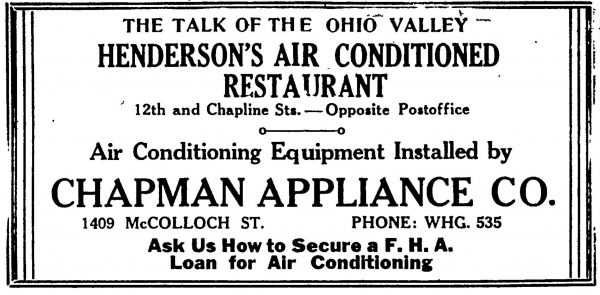
Ten years later, Henderson ran a full-page ad in R.L. Polk’s 1946 Directory. Here is where it makes the claim that it is Wheeling’s only air-conditioned restaurant. This information means that for ten years if Wheelingites wanted a chilled dining experience they would have to head on over to Henderson’s.
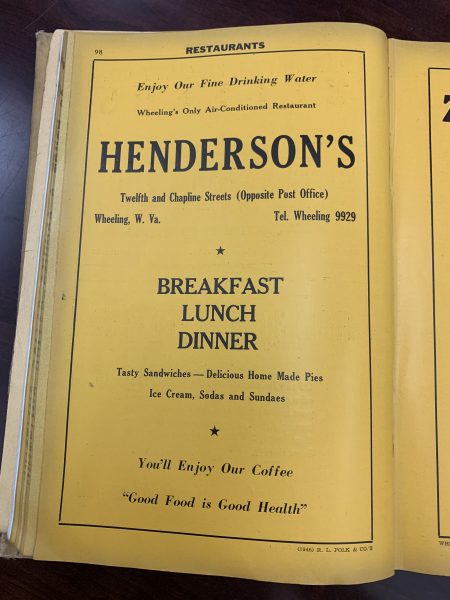
The advertisement placed by Griest’s Drug Store in the Wheeling Intelligencer makes the claim that they are the first air-conditioned pharmacy in the state. Nestled in between shopping reminders and perfume pitches, the ad explains some of the secondary functions of air conditioning. Not only does it make the air inside of the store 15 degrees cooler than the outside air, it also circulates the air in the space and “all odors and fumes are carried out immediately.” The ad also stresses that the air is filtered and purified– indicating that air conditioning was not marketed for comfort but for health as well.

In 1937 Kepner Funeral home announced that they had installed a Kelvinator Air-Conditioning– making it the first air-conditioned mortuary in the state.
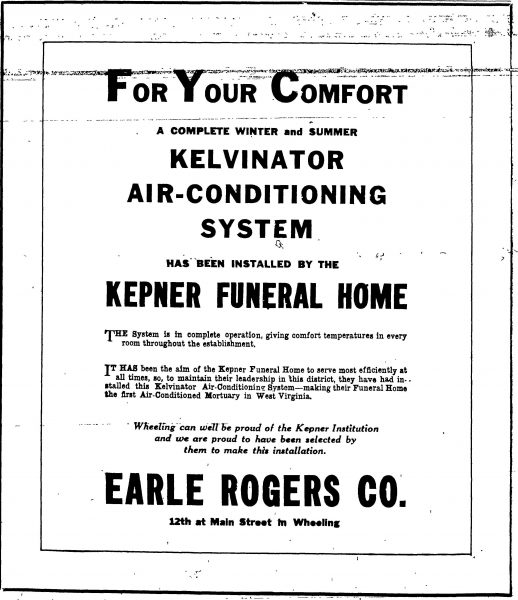
With all this talk of firsts, what about theaters? It used to be that one of the surest ways to cool off in the summer was going to see a movie. Although the Capitol and the Court Theatres led the pack in theater refrigeration efforts, other movie houses adopted this new technology as they were able.
Air Conditioning Does to the Movies
This advertisement congratulating the Court Theatre tells us a couple of things– first, that the Capitol Theatre was the first air-conditioned theatre in Wheeling. Secondly, it gives some insight into what other businesses were installing systems. Just two years after Griest’s Drug store became the first air-conditioned in Wheeling, Whelan’s Drug and Walgreens both installed air conditioning in their stores.
Well into the 1960, advertisements for movie theaters still contained language indicating that their theatres were equipped with air conditioning. Even though the technology was not new at this point, this advertising language gently reminded readers to include movie theaters in their summertime cooling strategies.
By 1990, questions about air conditioning had been dropped from the census.3 It’s likely that by this time, air conditioning had become so widespread that it was no longer useful or compelling to track. Even historic homes that were built before this technology existed were adapted to accommodate its installation– either by installing ductwork, ductless systems, or just putting in a few window units.
After months of record-breaking high teperatures this summer, it’s hard to imagine a time when we couldn’t beat the heat thanks to air conditioning. While air conditioning might be seen as more of a necessity than a luxury today, on hot days it can be a relief to think back on how far we’ve come since those muggy days in the early 1900s.
• Kate Wietor is currently studying Architectural History and Historic Preservation at the University of Virginia in Charlottesville, Virginia. She spent one glorious year in Wheeling serving as the 2021-22 AmeriCorps member at Wheeling Heritage. Since moving back to Virginia, she’s still looking for an antique store that rivals Sibs.
References
1 Haleema Shah, “The Unexpected History of Air Conditioning.” Smithsonian Magazine. June 24, 2019. https://www.smithsonianmag.com/smithsonian-institution/unexpected-history-air-conditioner-180972108/
2 1960 Census of Housing. Advance Reports– Housing Equipment by County. January 1962. https://www2.census.gov/library/publications/decennial/1960/housing-hc-a3/42017038ch1.pdf
3 1990 Overview. United State Census Bureau. https://www.census.gov/history/www/through_the_decades/overview/1990.html




